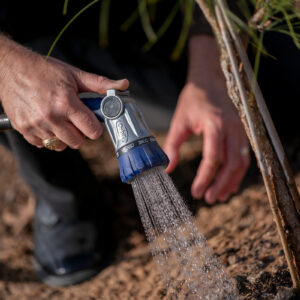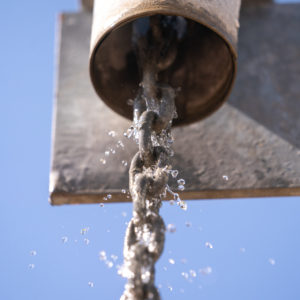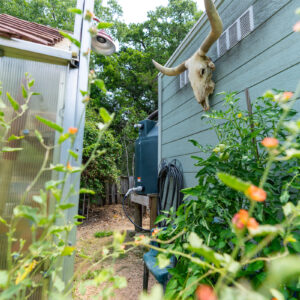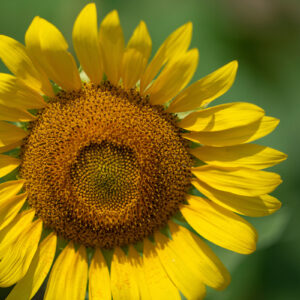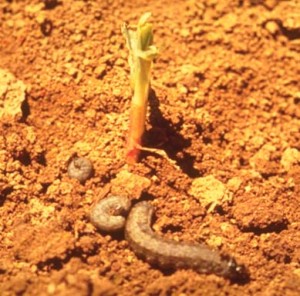 Numerous species, Family Noctuidae
Numerous species, Family Noctuidae
Description and Biology
Cutworms are the larval stage of nocturnal moths, several species of which damage sorghum. The typical cutworm larva attacking sorghum has a plump, curled-up appearance (Color Plate 4). Larvae are smooth, but vary in color from grayish-white to grayish-black or brown depending on species. Fully-grown larvae are 30 to 50 mm long. Most cutworms overwinter as partly- to fully-grown larvae. Some species, however, hibernate as adults, and others hibernate as pupae in the soil. Cutworms usually overwinter in cells in the soil, under trash, or in clumps of grass. They start feeding in the spring and grow until summer, then pupate in the soil. Depending on species, generations per year vary from one to five. Larvae of most species remain underground during the day and emerge to feed at night. Eggs are laid on stems or leaves of grasses, such as sorghum, or weeds, or on soil. Eggs hatch in two to fourteen days. Some species prefer to lay eggs in low areas of fields or those subject to flooding. Often weeds are abundant in these areas.
Symptoms & Damage
Cutworms of different species may damage sorghum plants in three ways: 1. some cut off sorghum plants at or slightly below the surface of the soil (surface-feeding cutworms), 2. some feed on above-ground plant parts (climbing or army cutworms), 3. others feed on underground plant parts including roots of seedlings (subterranean cutworms). Plants with severed stems die. Leaf feeding by cutworms causes ragged leaves, while root-feeding cutworms kill small plants or stunt larger plants.
Monitoring
Cutworms are detected by visible damage to sorghum plants. For surface-feeding cutworms, the number of severed plants per meter of row should be determined. A decision to apply insecticide should be based on the degree to which an adequate stand is threatened. Significant loss occurs when about thirty percent of leaf tissue has been eaten by cutworms that feed on above-ground plant parts. Cutworms that feed below ground should be sampled before planting sorghum, especially in areas with a history of subterranean species.
Management
Cultural management include tillage to destroy vegetation in late summer or early fall, thoroughly preparing the seedbed three to six weeks before planting, and controlling weeds. Cutworms are more abundant in weedy fields. Herbicides may be used to kill winter weeds, thus reducing the potential for damage by cutworms. Insecticide can be used against cutworms in sorghum, but effectiveness of control can vary greatly. Because cutworms hide in the soil during the day, late-afternoon applications sometimes are more effective. Poisoned baits are effective against some species, but are expensive. Subterranean cutworms can be suppressed with insecticide applied to soil at planting. Insecticide applied as a 15- to 18-cm band at planting should be incorporated into the top 2.5 to 5 cm of soil. Aerial or ground application of insecticide controls cutworms feeding above ground on sorghum plants. Such insecticide applications are more effective on surface and climbing than subterranean cutworms. Also, insecticide is more effective when the soil is moist.
